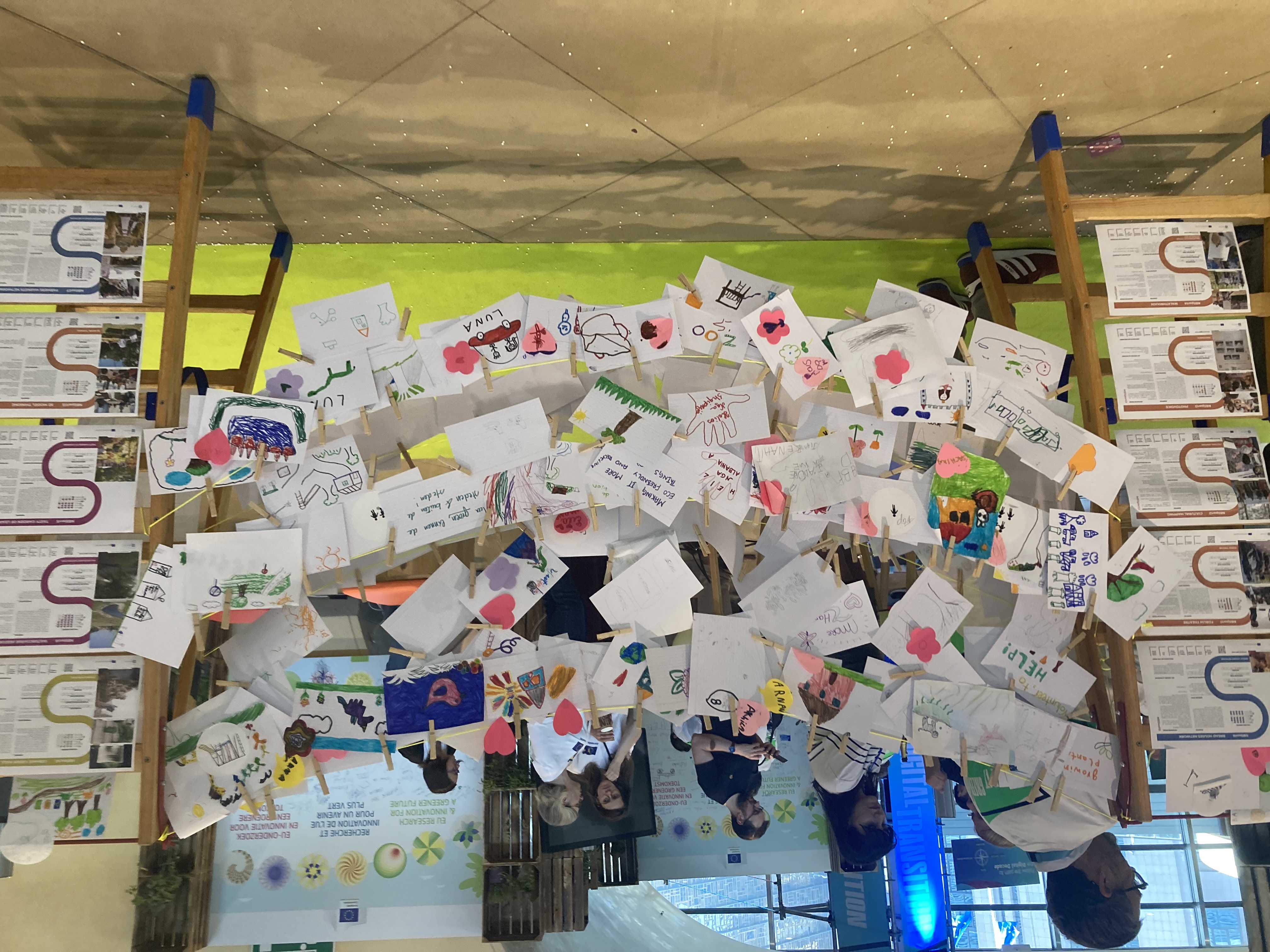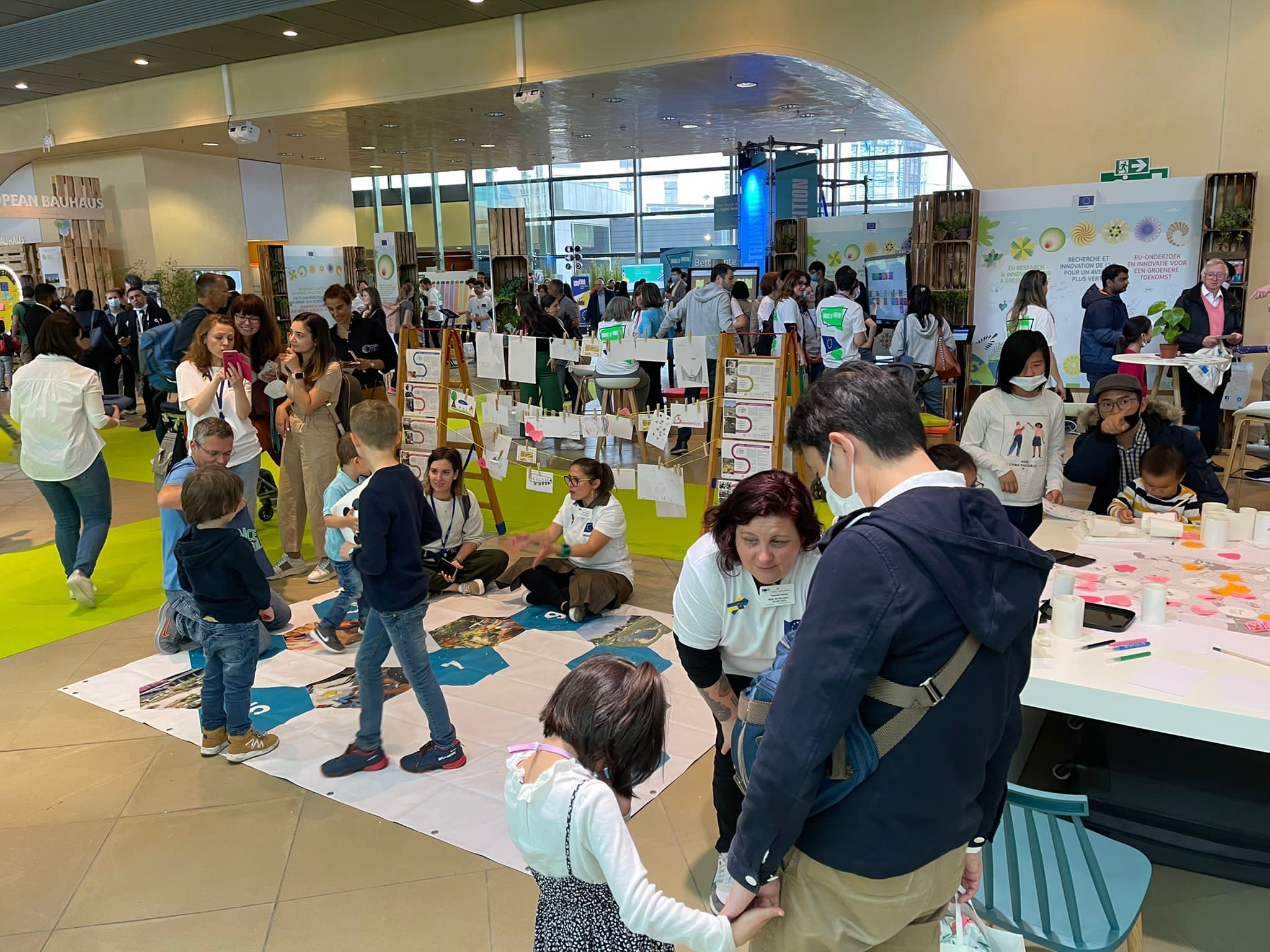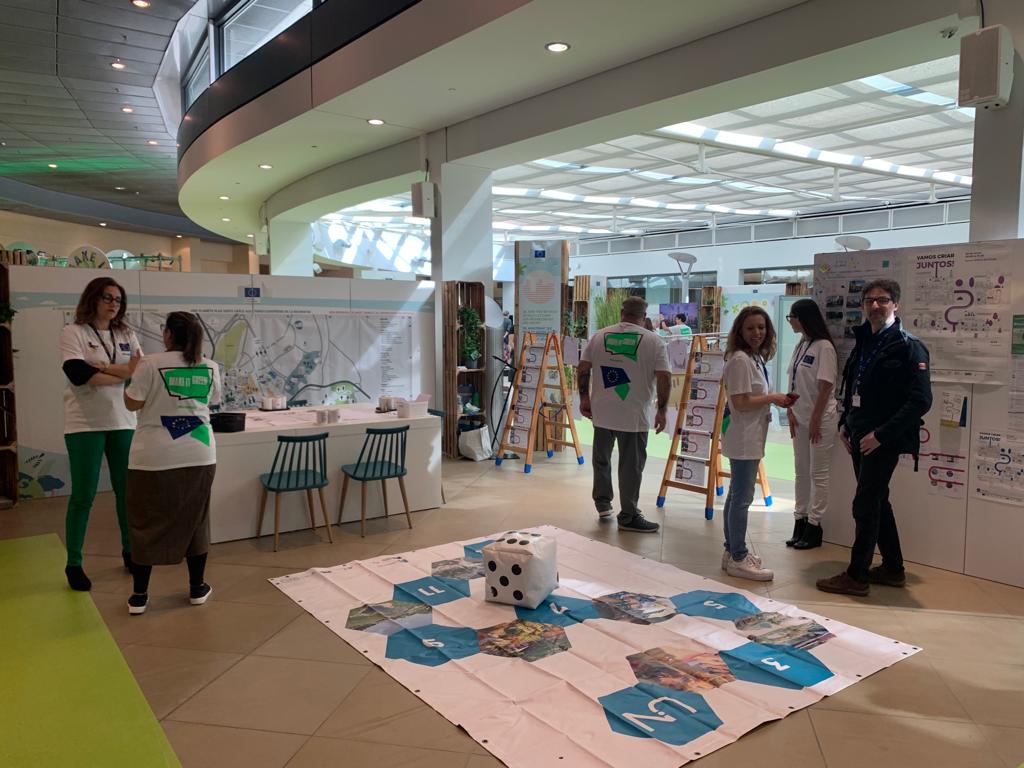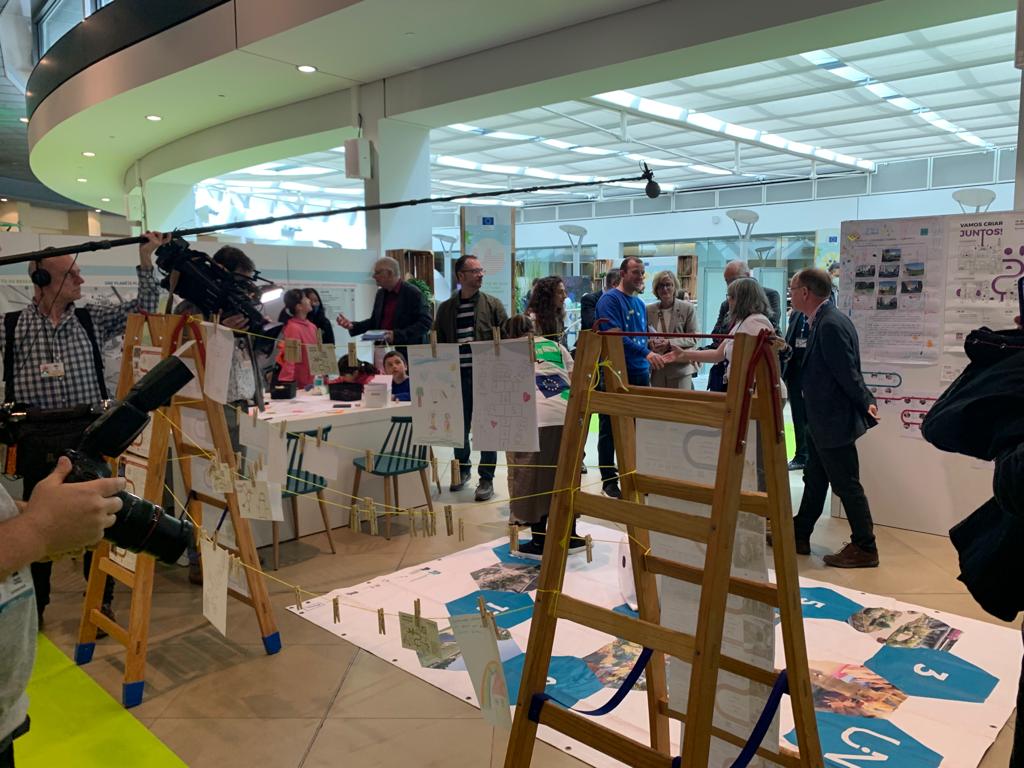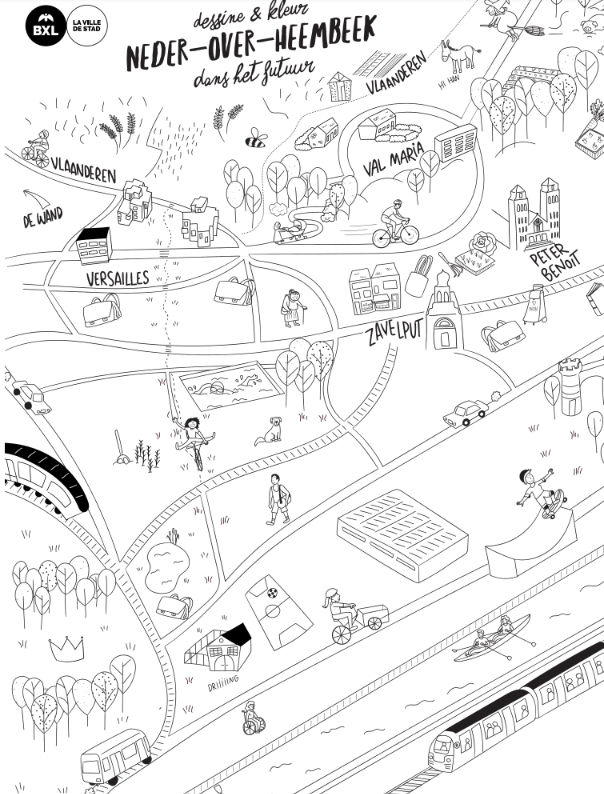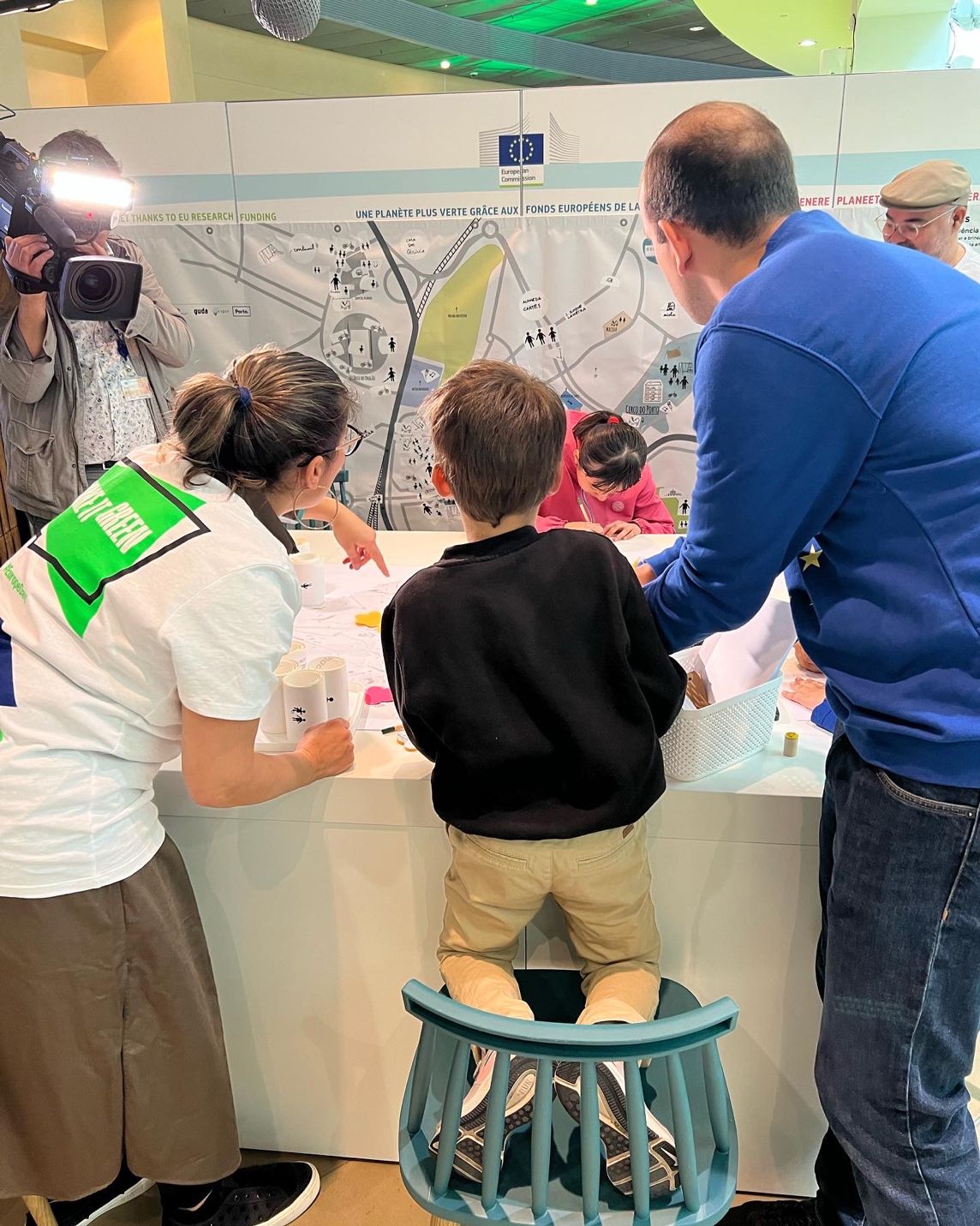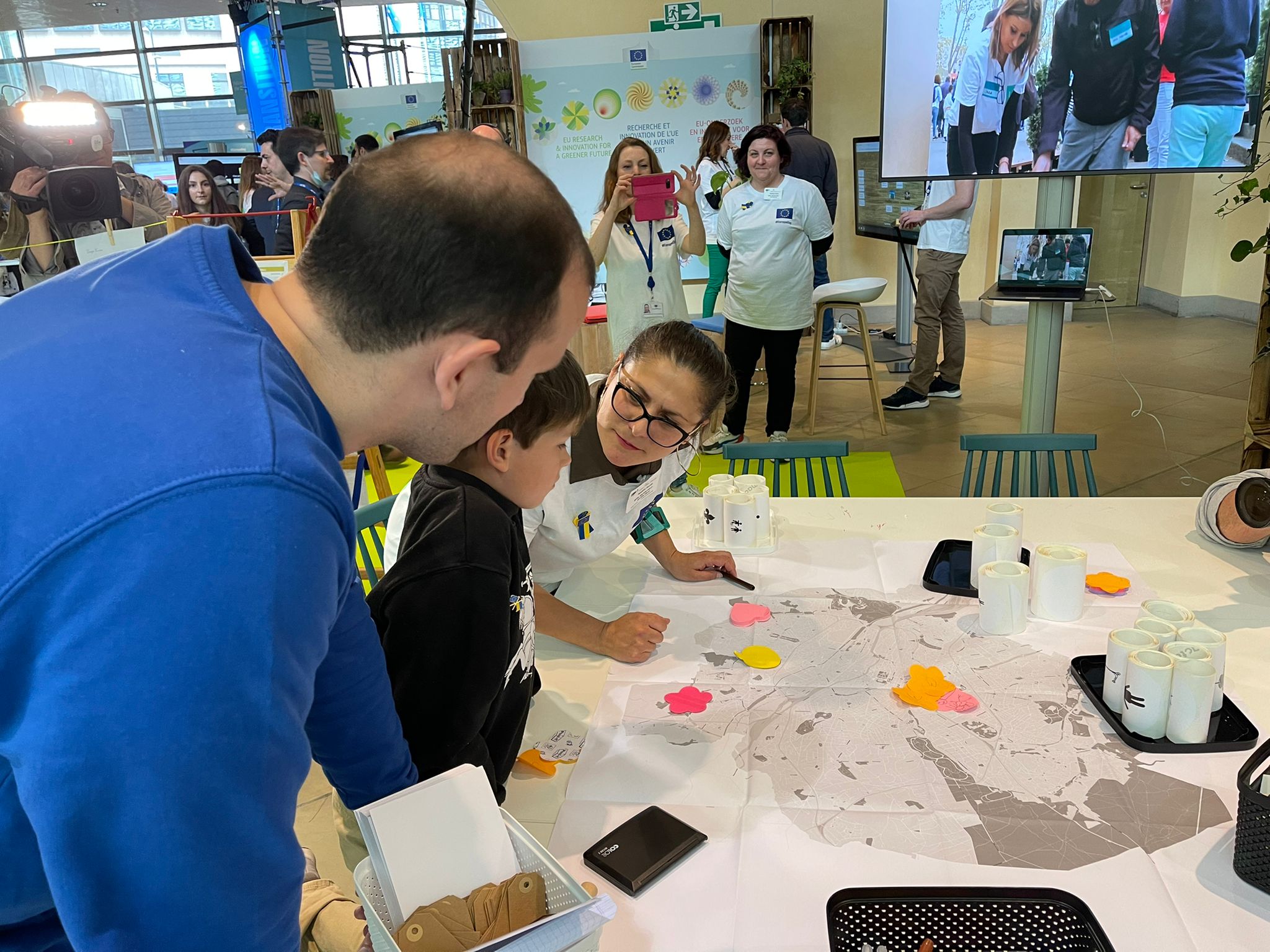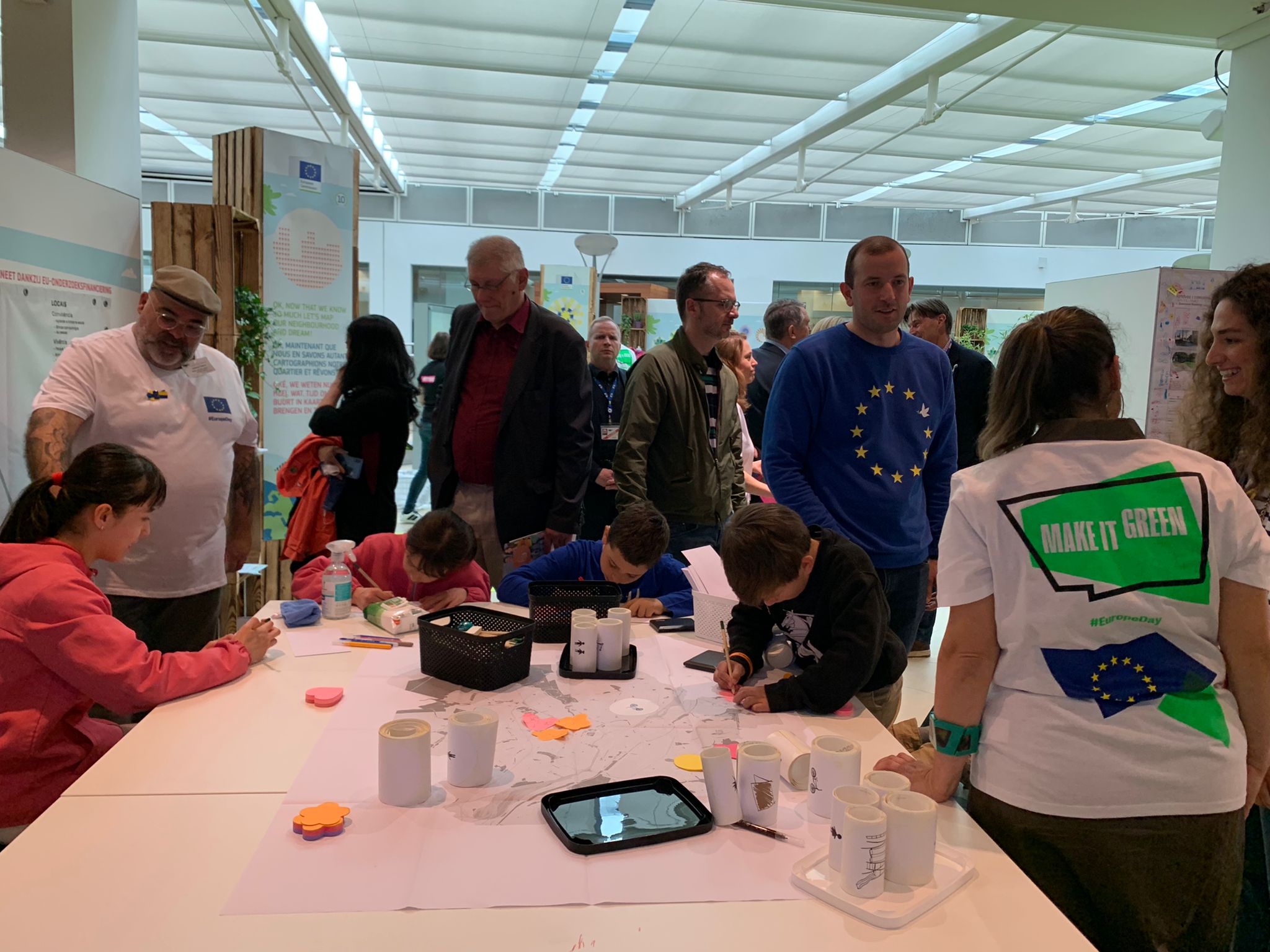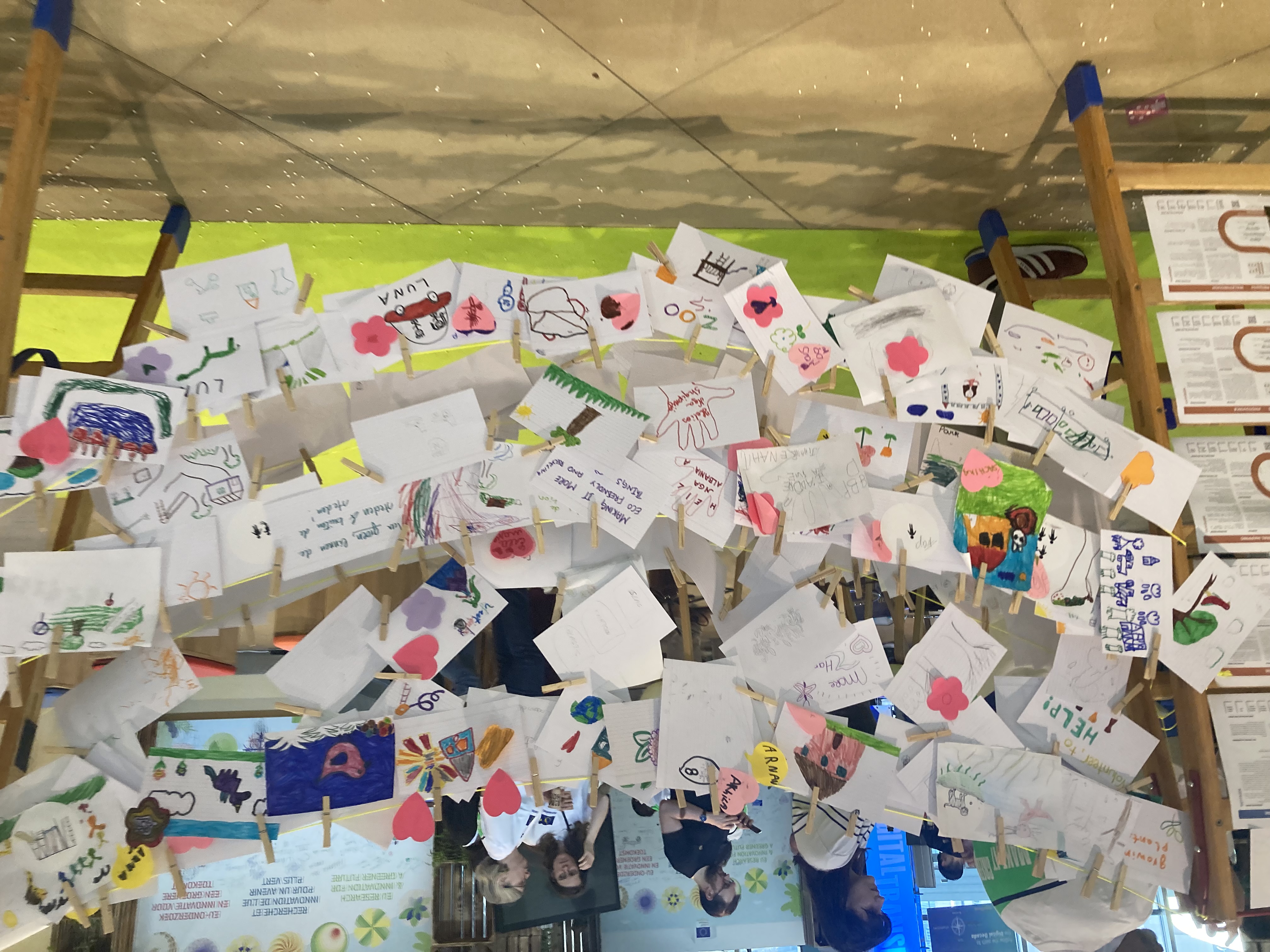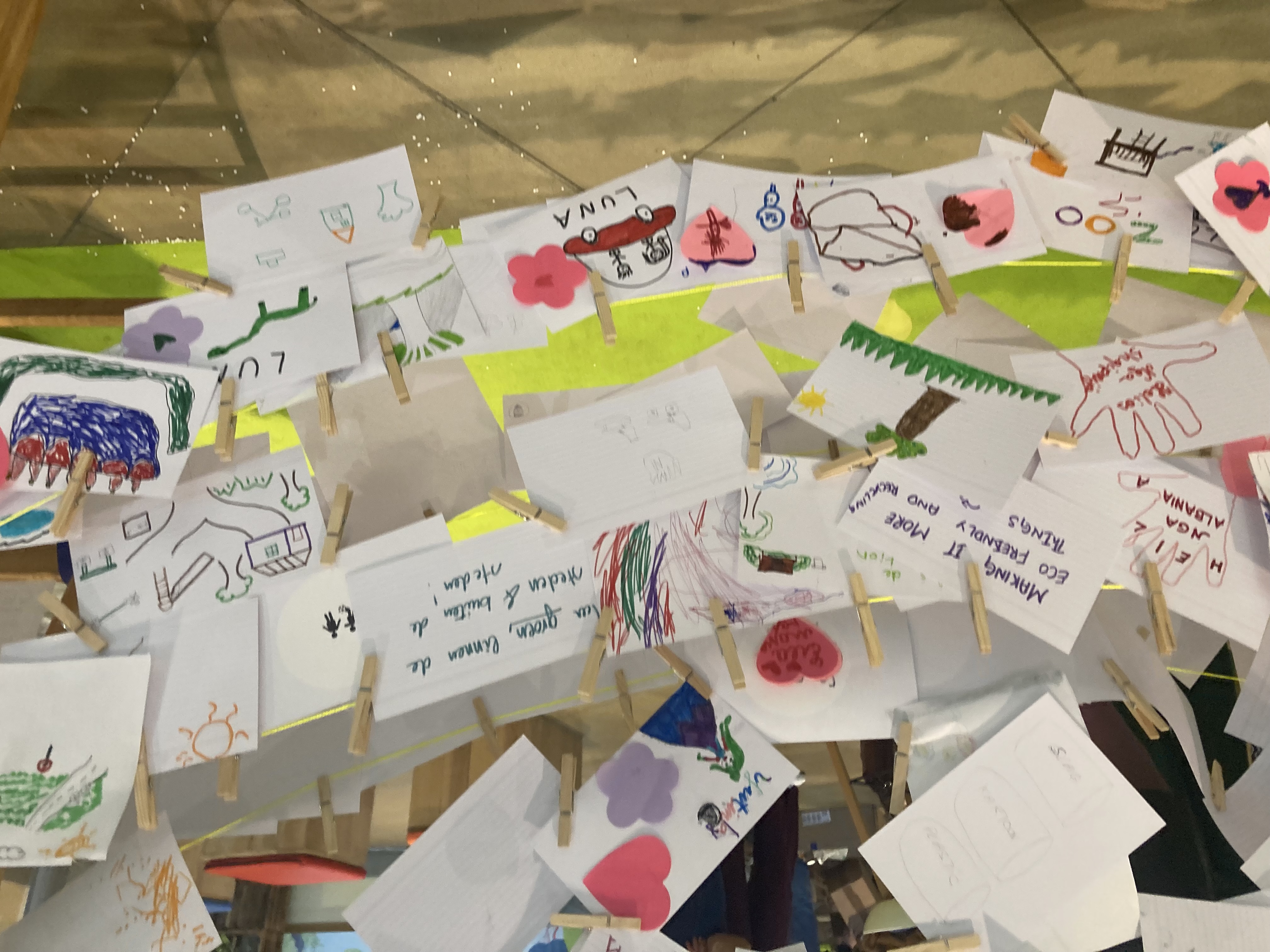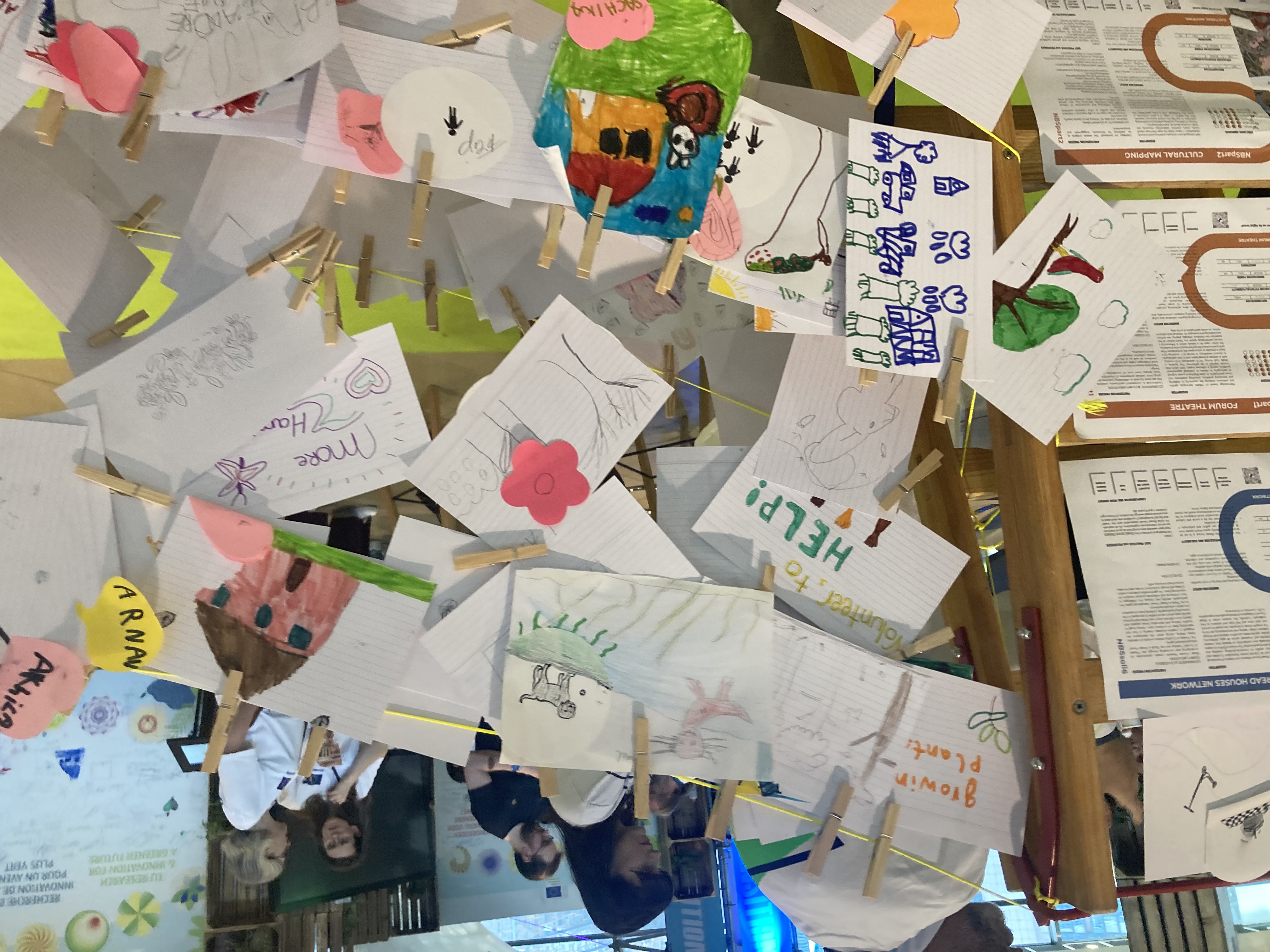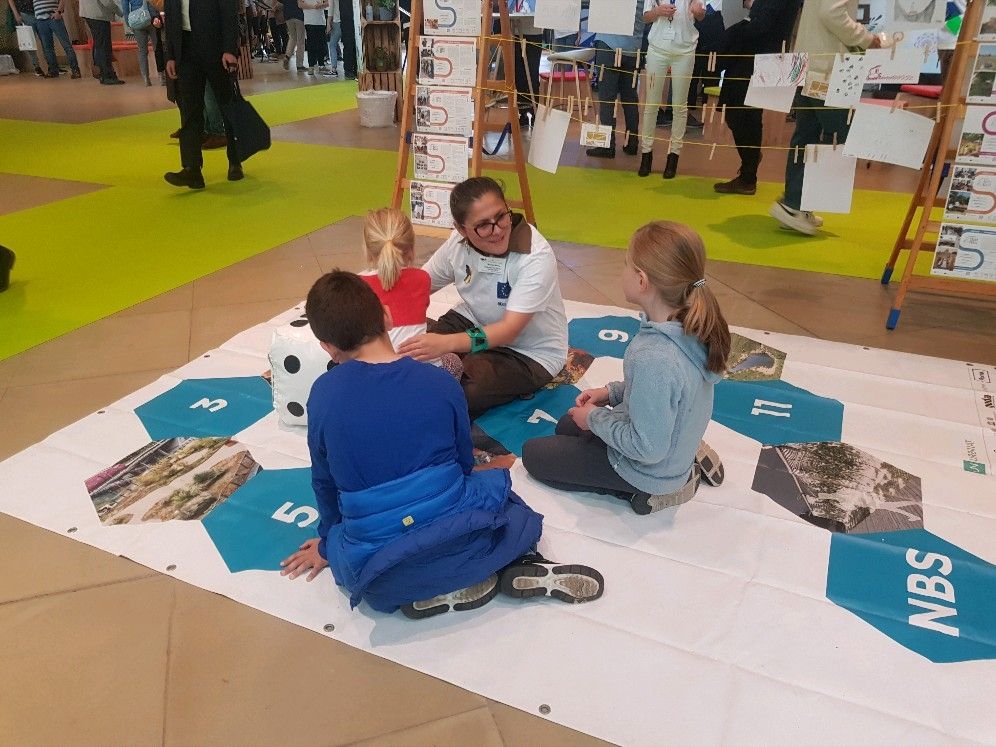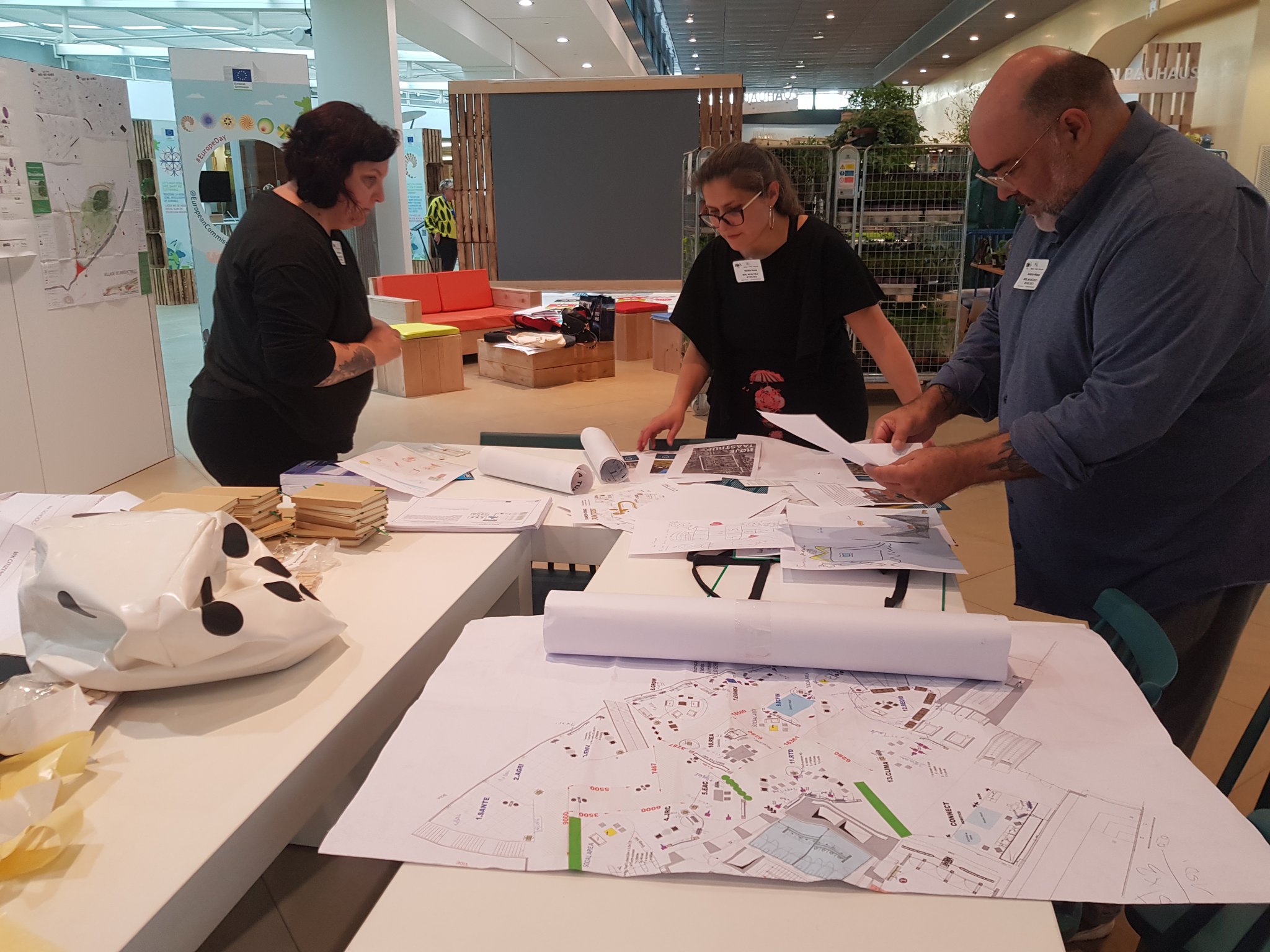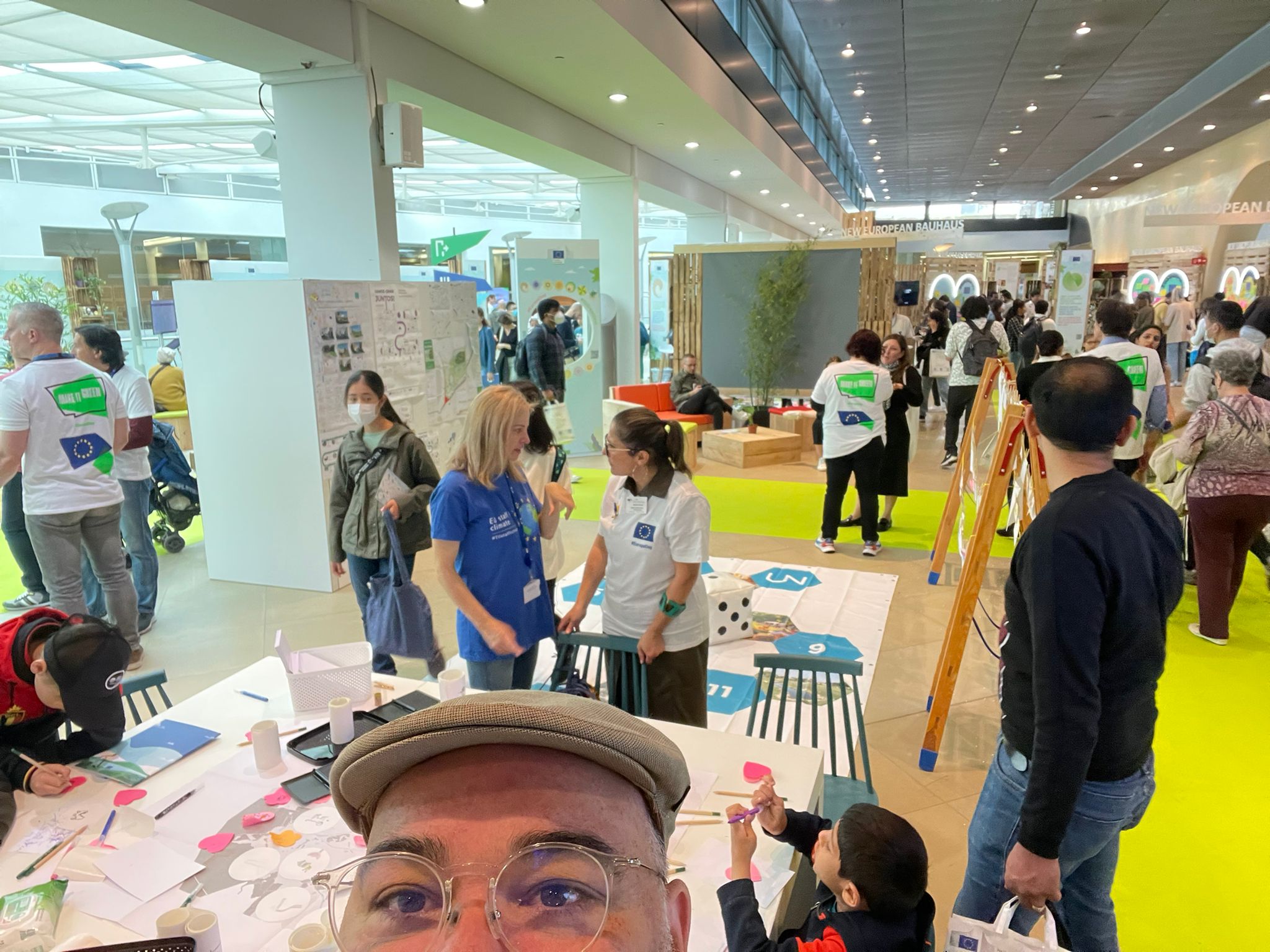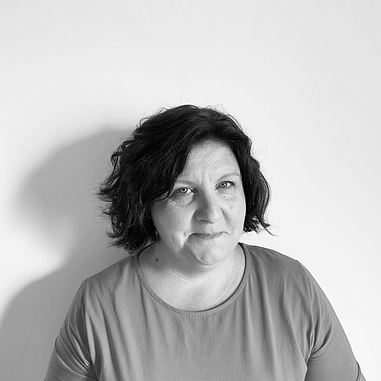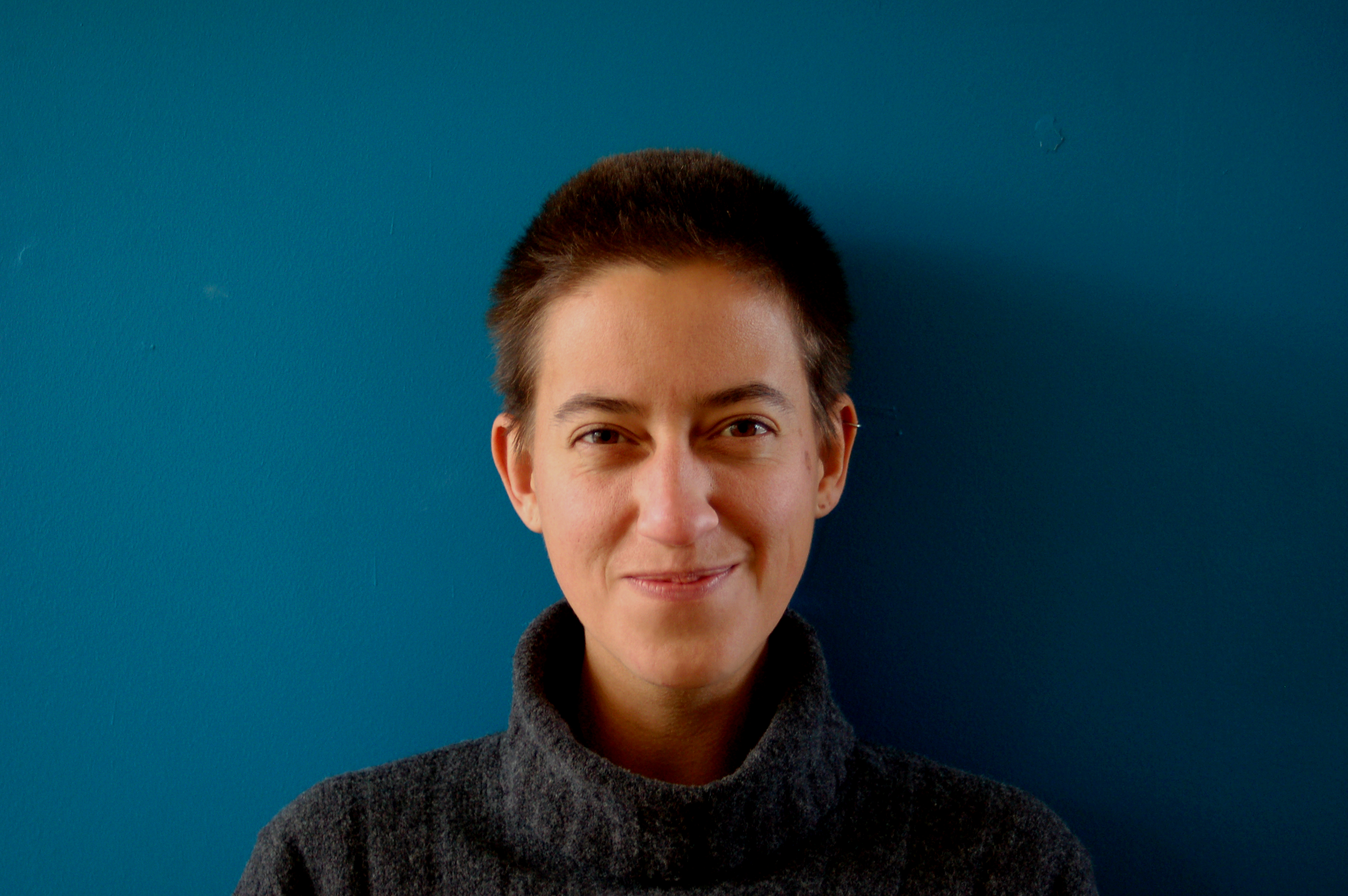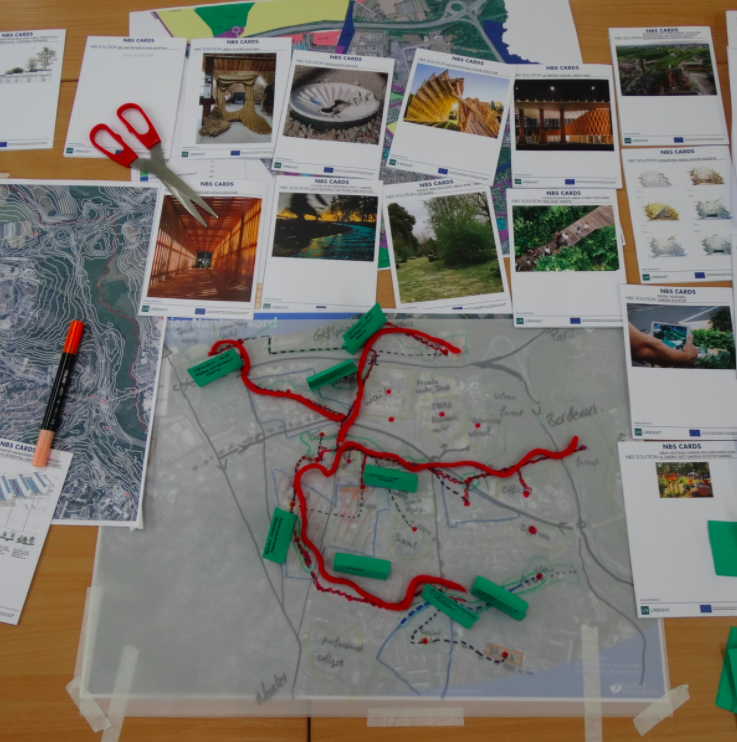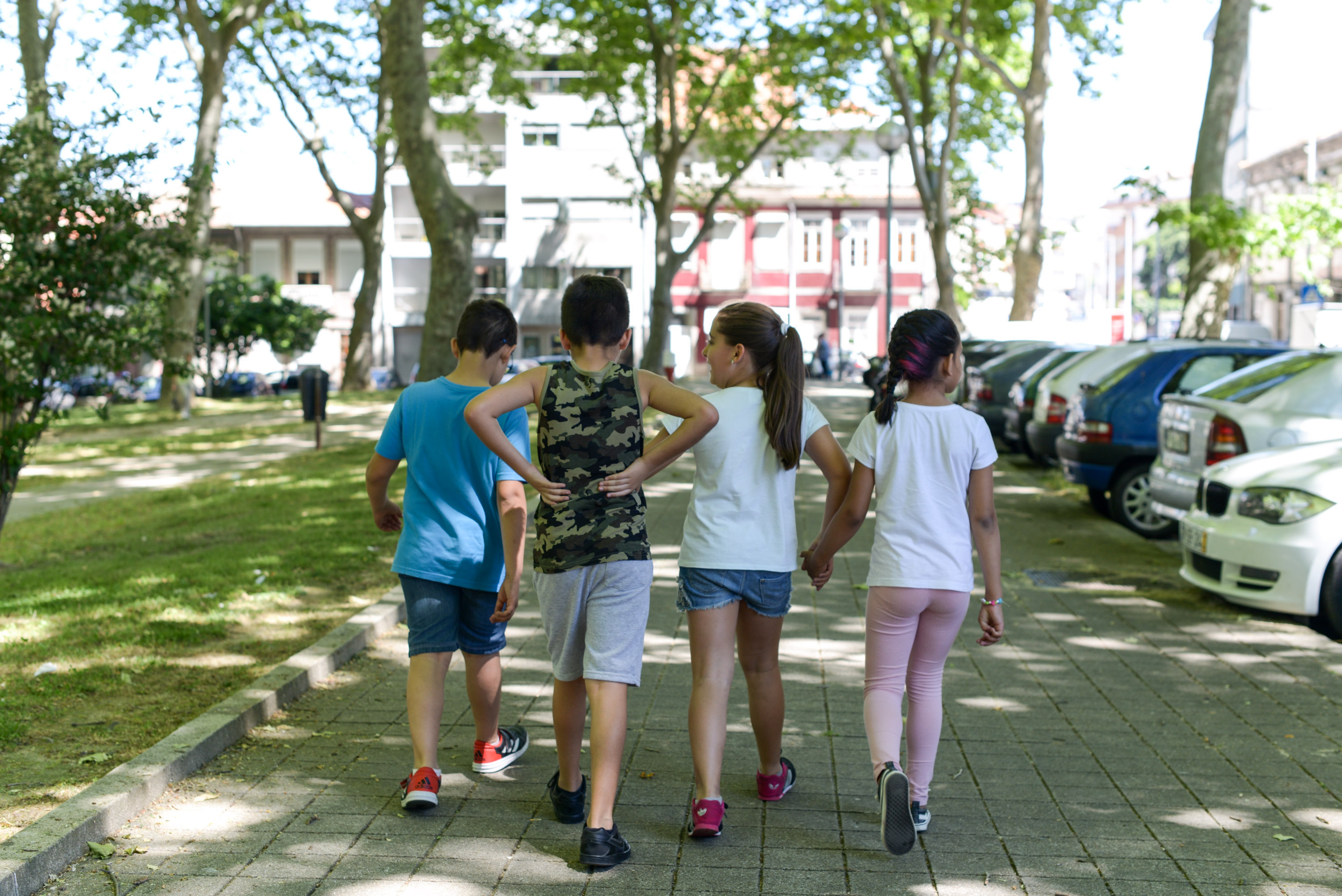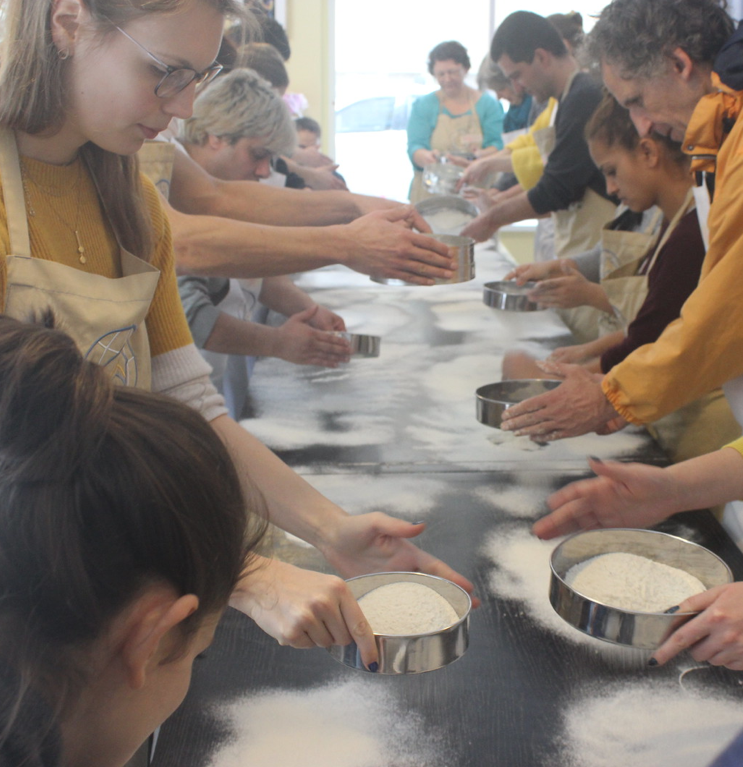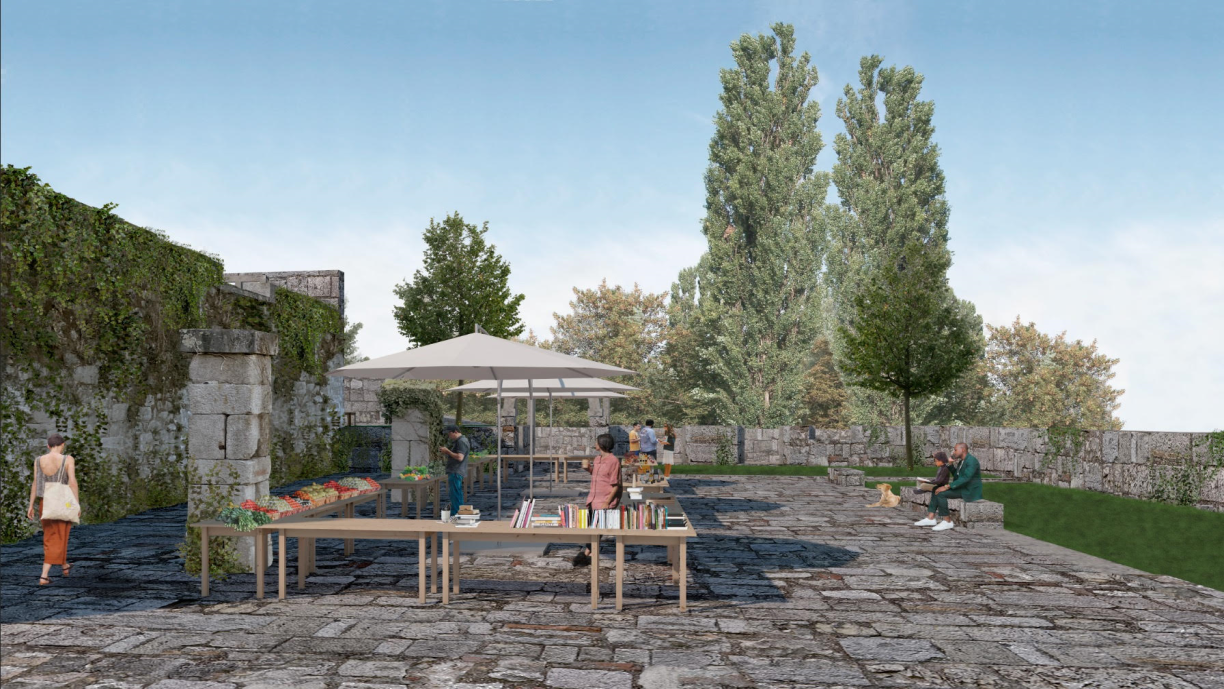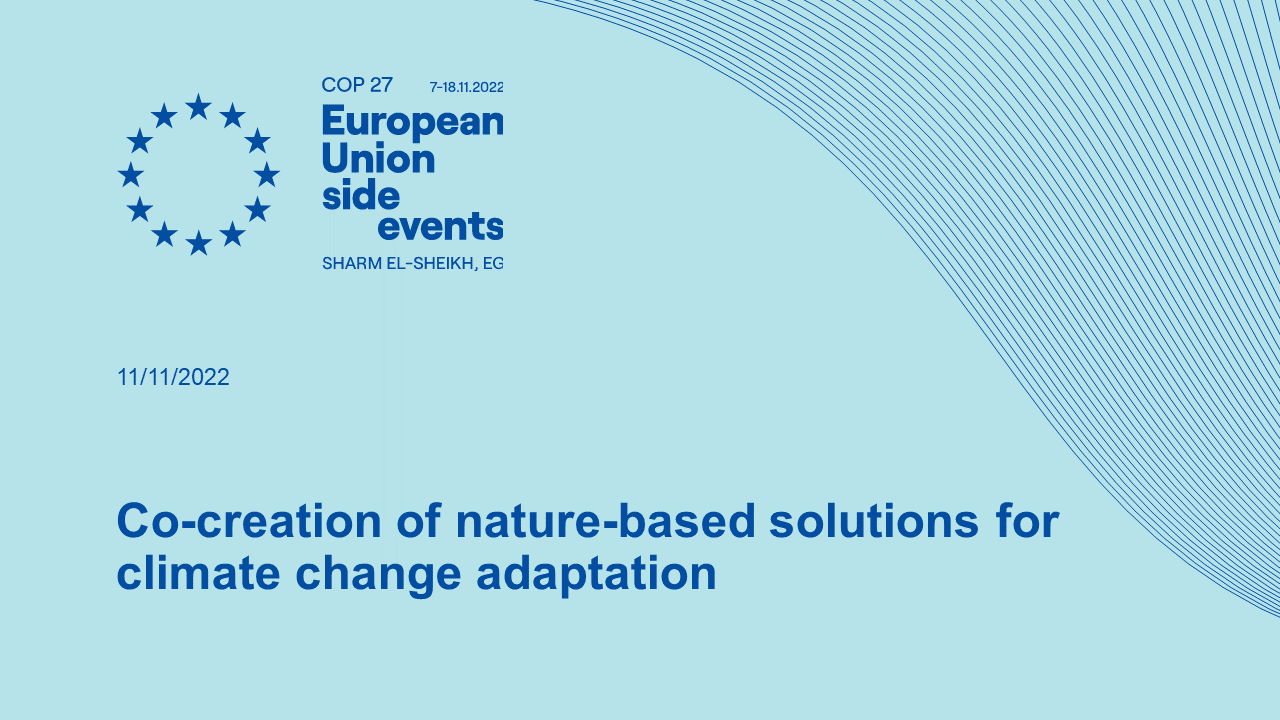URBiNAT concepts and interactive methods on display during Europe Day 2022
7 May 2022. At the EU Open Day, URBiNAT Consortium members interacted with visitors by replicating some of the participatory activities that emerged from a methodological process of co-creation between researchers, practitioners, municipal technicians, and stakeholders of URBiNAT’s Living Labs. We presented three interrelated activities based on Mapping, Dreaming, and Gaming that we tested in the URBiNAT participatory process of Porto, in Portugal.
In these activities, we invited participants to present their neighbourhood: “Mon quartier à moi, c’est ça!” / “This is my neighbourhood!”. The objective was to reveal the main assets – tangible and often intangible – of their hometown; assets that are not always discernable to people from outside their neighbourhoods. We wanted to reveal the assets which residents do not often have the opportunity to express, but also what they would like to change or improve about their neighbourhood. In this interaction, we also introduced the concept of nature-based solutions (NBS) by means of a board game. Novel means communication and interaction are key in this dialogue and to connect with people of different backgrounds and ages.
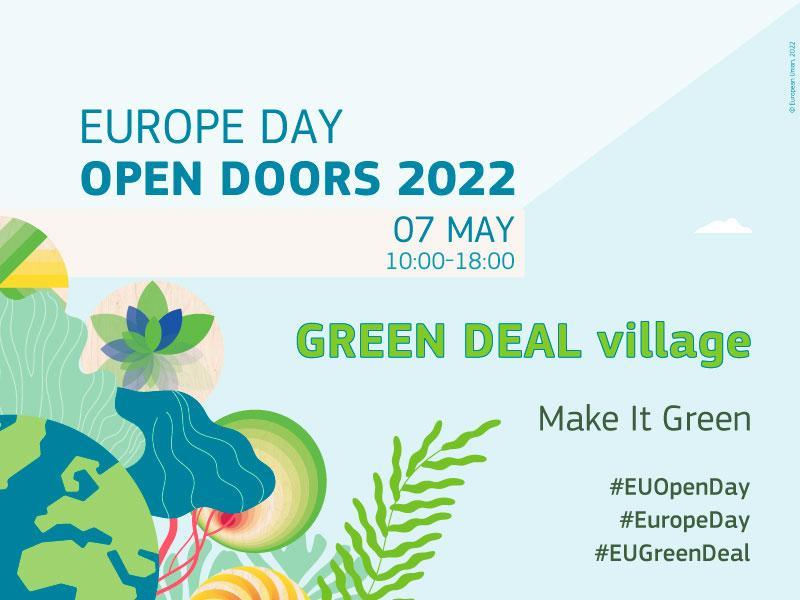
URBiNAT has been developing participatory processes (see list of Participatory NBS in the URBiNAT NBS Catalogue) with different sections of the population including children and youth, in schools, with associations, local organizations, and young adults, in different formats adapted to their interests. We invited children and youth to tell us about their cities. Many of them were from Brussels and we learned a lot about this city, namely about animals that live there, such as parrots and foxes. But in general, they gave many ideas about how their urban lives could be improved, such as more animals, more nature, fewer cars, no cigarette butts and garbage on the floor, more opportunities to play, do sports, be creative and be with other children, valuing also being with their families. They also mentioned environmental solutions they know from other places, such as recycling water.
Many aspects impressed us during this event: the diversity of visitors and stands; the number of families; the quality of the organization of the event and how we were welcomed by the enthusiastic organizers. We were also surprised by how much children were attracted by the table where they could draw, unleash their creativity, and leave their mark on the event. In fact, the children were very receptive. They paid a lot of attention to the different explanations we gave, as well as the concepts around nature-based solutions we introduced. The way we interact with children and youth in the URBiNAT project gives us many lessons that we take from one activity to another. It means, for example, to seat on the floor to play and discuss.
In this framework, the discussions we had on the right to participate were impactful, not least when we insisted on the importance of the voices of children being heard and their added value in comparison to the ideas of adults. We saw children commenting on this with their parents. In relation to adults, they seemed happy and sometimes surprised by how their children were interacting and contributing to the themes we were addressing, without asking adults/parents to intervene. The subjective maps of the Brussels’ neighbourhood of Neder-Over-Heembeek (URBiNAT interventional area) were also impactful for adults because they re-discovered a place that is familiar to them.
The right of children and youth to participate is important to us in the sense that they are citizens of today and not only for the future. They must be at the centre of the process, and not held back by the expectations of adults. Moreover, it is important for us to be able to amplify our audiences. In our understanding, the Open Doors of the Europe Day are aimed at being connected to citizens and broadening the dialogue about what is the added value of the European Union. As an EU-funded project, it enhanced the meaning of our contribution to European citizenship and diversity.
URBiNAT Consortium Members
Related URBiNAT Outputs & Deliverables
D3.1: Strategic design and usage of participatory solutions and relevant digital tools in support of NBS uptake
This deliverable identifies the actors involved in participation and the conditions needed for active, positive and ethically sound participation. In doing so, the deliverable takes stock of the existing methods and tools for participation being used and likely to be used in the future. Furthermore, it gathers insights for strategic design and usage of participatory solutions and relevant digital tools in support of NBS uptake. This stocktaking activity provides URBiNAT with insight as to the state-of-art regarding the use of relevant participatory solutions, including digital technologies and tools, applied by stakeholders in the frontrunner and follower cities; their ease of use; services provided; usage levels and drawbacks associated with them. The objective is to have a picture of the existing participatory culture in the frontrunner and follower cities. In addition, the deliverable will begin to shed some light on actual and potential collaboration among stakeholders to enhance citizen participation in local communities in frontrunner and follower cities. This will be based on a generic model for the assessment of existing participatory culture, as well as engaging part of URBiNAT's portfolio of participatory solutions for application in the cities.
D3.2: Community Driven Processes to Co-Design and Co-Implement NBS
Deliverable 3.2 (D3.2) is the second deliverable of work package 3 (WP3) on citizens’ engagement. D3.1, submitted in month 12 of the project, reported on the strategic design, use of participatory solutions and relevant digital tools in support of the uptake of n ature-based solutions ( NBS). D3.2 reports on the advancements of the URBiNAT project in tailoring participatory methods and tools to city cultures for the co-design and co-implementation of NBS processes.
D3.5: Healthy Corridor Participatory Process Report / Toolkit
The approach we took in preparing this deliverable was based on the understanding, that the responsible team preparing and organising the participatory design process of the URBINAT project, needed a manual in toolkit format so that the internal dissemination of good practices and agreed tool descriptions could be as effective as possible. Furthermore, it would be the guiding principles and practices of each of the cities in URBiNAT in their participatory design processes. From the beginning, we want to signal that the process will be open to customization, adaptation and parameterization by the local city teams according to their contexts, experiences, knowledge and willingness to experiment / innovate in the way they involve and create commitments with their stakeholders, citizens and other resources engaged in the territory. Prior to gathering an information report, incl. an evaluation of how the participatory design processes are conducted in cities, we understand that it is necessary to present a guide / toolkit describing the general process itself.


